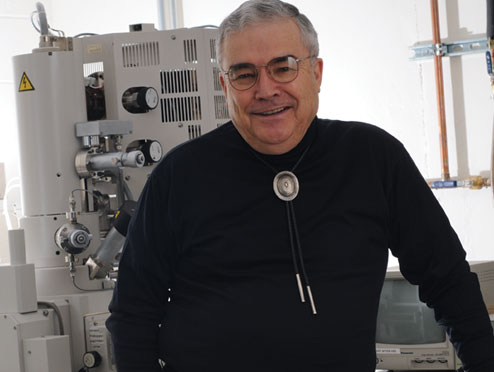
Delbert Day: glass master and cancer fighter
In 2010, people from around the world traveled to Missouri for a chance to meet Delbert Day, Curator's Professor emeritus of materials science and engineering at S&T. The main purpose of the pilgrimage was to honor Day, CerE '58, with the Phoenix Award, which is given annually to a living person who has made a major contribution to the glass industry.
A member of the National Academy of Engineering, Day played a pivotal role in developing radioactive glass microspheres that are being used at more than 100 sites around the world to treat patients with inoperable liver cancer. Day was also instrumental in forming MO-SCI Corp. in Rolla, which manufactures glass microspheres and other glass products used in the health care industry.
Prior to the development of the glass microspheres, there was no effective way of treating patients with inoperable liver cancer, and life expectancy was measured in weeks or months. In the 1980s, Day and colleagues first conceived the idea to inject radioactive glass microspheres into the blood supply of malignant tumors inside the liver.
Today, 8 million to 10 million radioactive beads (each about one-third the diameter of a human hair) can be transported to the tumor, where very large doses of radiation safely work to destroy the cancer with minimum risk to the patient. The treatment is done on an out-patient basis and there are few side-effects. "Patients get up and walk out with a radiated liver," Day says, "But they don't get nauseous or lose their hair."
Due in large part to Day's efforts, the life expectancy of patients treated in this way has been increased significantly, from weeks to years.
Day holds more than 50 U.S. and foreign patents. He directed the first U.S. glass melting experiments in microgravity (conducted aboard a NASA space shuttle). He is also a co-inventor of Glasphalt, which uses recycled glass as part of the aggregate in asphalt in place of rock. Currently, Day is working on ways to use bioactive glasses for bone and soft tissue repair. His latest project involves using glass materials to heal open wounds.
